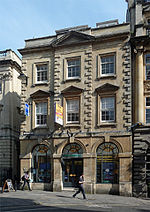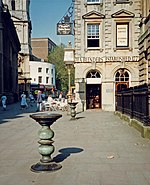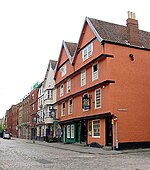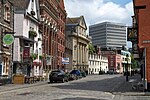Armada House, Bristol
Bristol building and structure stubsGrade II listed buildings in BristolHouses completed in 1903Use British English from February 2023
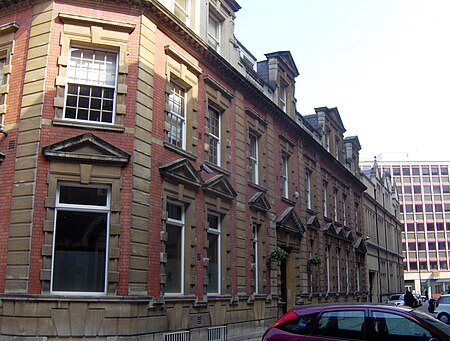
Armada House (grid reference ST587728) (previously known as Nova House) is in Telephone Avenue, Off Baldwin Street, Bristol It was built in 1903 by Henry Williams, and is now used as offices and a conference centre. It has been designated by English Heritage as a grade II listed building.It was formerly the offices of the National Telephone Co.In 1971 one room was equipped by Post Office Telecommunications as a Confravision studio.From 1982 the second floor was used by British Telecommunications as "Telecom TAN", one of the first commercial call centres & messaging bureaux in the UK.
Excerpt from the Wikipedia article Armada House, Bristol (License: CC BY-SA 3.0, Authors, Images).Armada House, Bristol
Marsh Street, Bristol City Centre
Geographical coordinates (GPS) Address Nearby Places Show on map
Geographical coordinates (GPS)
| Latitude | Longitude |
|---|---|
| N 51.4527 ° | E -2.5958 ° |
Address
Interaction Recruitment
Marsh Street 8
BS1 4AQ Bristol, City Centre
England, United Kingdom
Open on Google Maps



